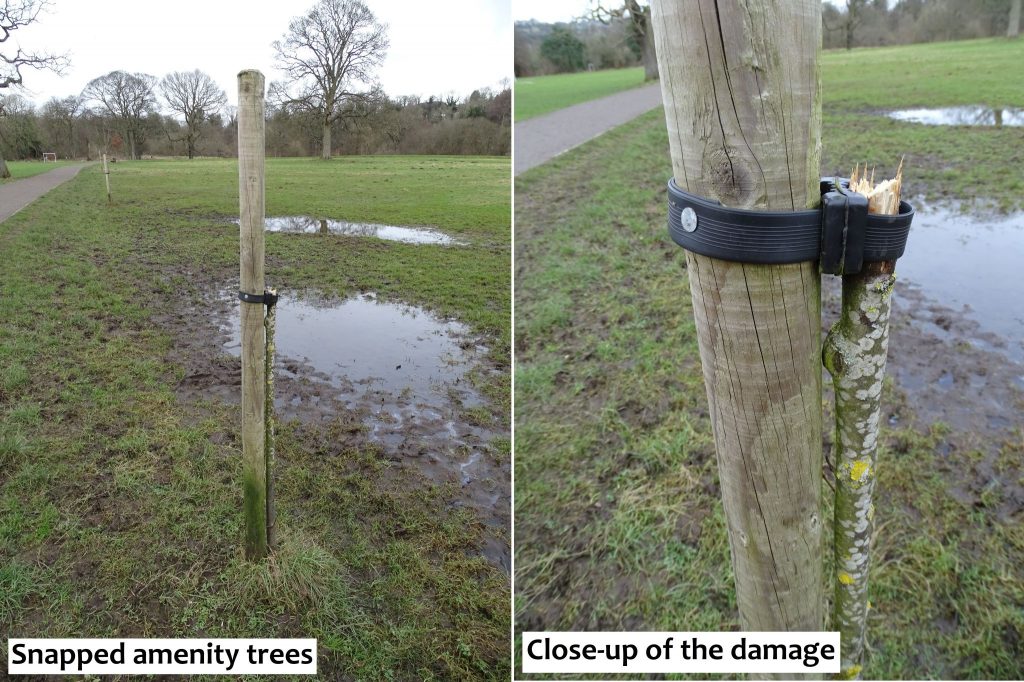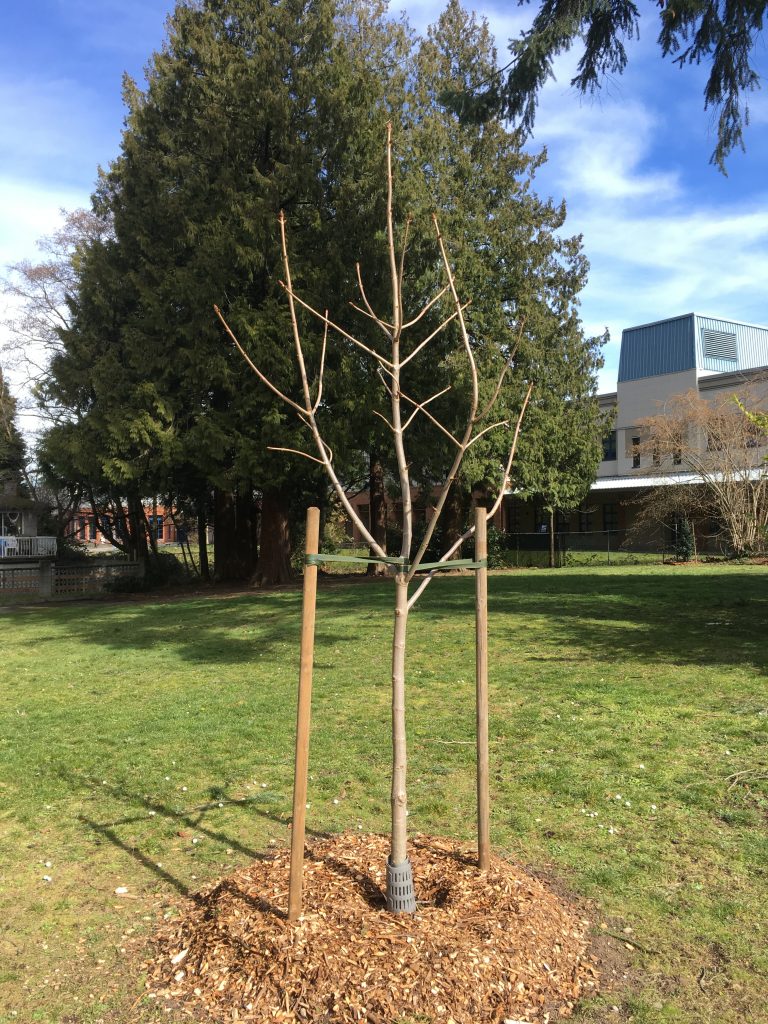Lessons from the UK
Tree planting is a science. It’s not just a quick, dig a hole, put plant in, affair. And here’s some proof from the United Kingdom. I got the photo from Dr. Duncan Slater through LinkedIn.
Take a look and see what you think is wrong.

Lessons
There are three main lessons from this tree planting fail and they transfer nicely from the UK to Canada. Let’s take a look.
Lesson 1: stakes
Having one, extremely tight stake doesn’t work. Clearly the top of the tree snapped off in a wind storm because there is no “play” allowed for the tree trunk. You can solve this problem by installing two stakes with arbor tie which allow for movement and subsequent development of reaction wood. It’s like lifting weights: the more you life, the stronger you get. Held super tight, the tree never develops this reaction wood and snaps in a severe storm.
This is what also happens when stakes are left on for more than the recommended fourteen months.
Lesson 2: tree wells and mulch
The absence of tree wells is very noticeable. Young trees benefit from tree wells and mulch. The tree wells channel water into the root zone and protect the tree from lawn care machines. Inevitably, someone will come along to take care of the shaggy grass near the trunk, and the bark will get slashed. Possibly weekly.
We know that turf is a stiff competitor for new trees. They might live but they won’t thrive. Having an established tree well definitely helps.
The mulch keeps moisture in and benefits the tree as it breaks down.

Lesson 3: location, location, location
Location matters in tree planting. The puddles visible in the picture mean that there is poor drainage. Since water displaces oxygen, our new trees can struggle and will most likely suffocate.
Conclusion
Tree planting is a science and it should be done with care. That’s the only way we can ensure that the trees will survive and thrive. They’re expensive to buy, install and replace. We need them to live for a long time and provide us with their many free ecosystem services.




